If you’re noticing brown leaves on your begonia, it’s likely due to one of three main causes: too much sun, not enough water, or pests. With a little investigation, you can figure out the problem and get your begonia back to looking its best.
What Portions of Begonia Are Infected?
There are several different types of infections that can affect begonias, so it is important to identify the symptoms in order to determine the best course of treatment. If you notice that the leaves on your begonia are turning brown, it could be a sign that the plant is infected.
If you notice these symptoms, you should remove any affected leaves and dispose of them. One of the most common infections is begonia leaf spot, which is caused by a fungus. The symptoms include small, brown spots on the leaves, which can eventually lead to the leaves turning brown and falling off. You can also treat the plant with a fungicide to prevent the infection from spreading.
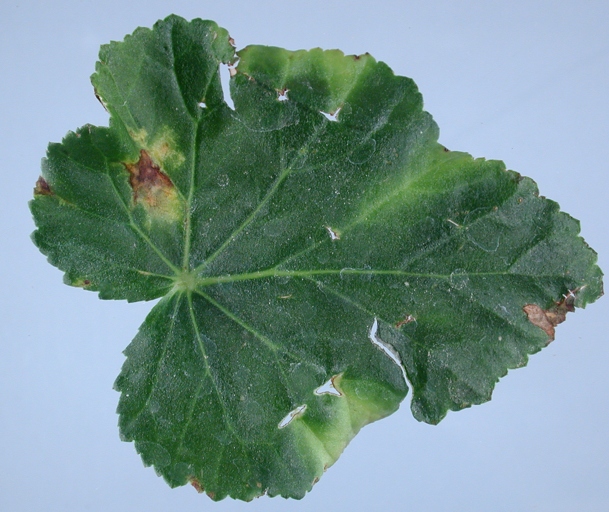
This is caused by a bacteria or fungus and can occur if the plant is overwatered or the roots are not getting enough oxygen. If you think your plant has root rot, you should remove it from the pot and replant it in fresh, well-draining soil. You can also treat the plant with a fungicide to prevent the infection from spreading. Another type of infection that can affect begonias is root rot. The symptoms include yellow or brown leaves, wilting, and eventually death.
Causes Of Brown Leaves in Begonias
One of the most common problems with begonias is brown leaves. There are several possible causes of this problem, and it is important to identify the cause in order to correct it.
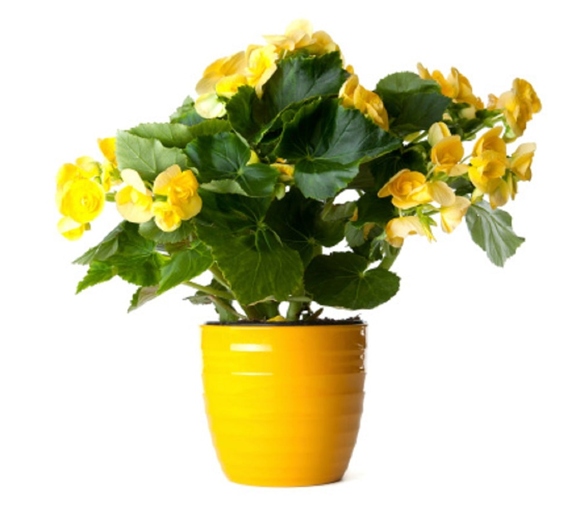
One possible cause of brown leaves is too much sun. If you think this might be the problem, move your begonia to a location with less sun. Begonias need bright light, but too much sun can scorch the leaves and cause them to turn brown.
Another possible cause of brown leaves is too much water. Begonias need to be kept moist, but too much water can cause the leaves to turn brown and rot. If you think this might be the problem, allow the soil to dry out between watering.
Finally, brown leaves can also be caused by pests or diseases. If you see any signs of disease, such as spots or discoloration, remove the affected leaves and treat the plant with a fungicide. If you see any pests on the leaves, remove them and treat the plant with an appropriate pesticide.
Underwatering Cause Begonia Leaves to Turn Brown
When begonias don’t get enough water, their leaves will start to turn brown and wilt. This is a sign that your plant is stressed and needs more water. If you see these signs, water your begonia immediately and make sure to keep the soil moist. If your begonia leaves are turning brown, it’s likely due to underwatering.
Solution
If your begonia leaves are turning brown, it is likely due to one of three reasons: too much sun, not enough water, or pests.
Too much sun can cause the leaves of your begonia to turn brown and dry out. If you notice that the leaves on your begonia are starting to turn brown, move it to a location that gets less sun.
Not enough water can also cause the leaves of your begonia to turn brown. Be sure to water your begonia regularly, and keep the soil moist but not soggy.
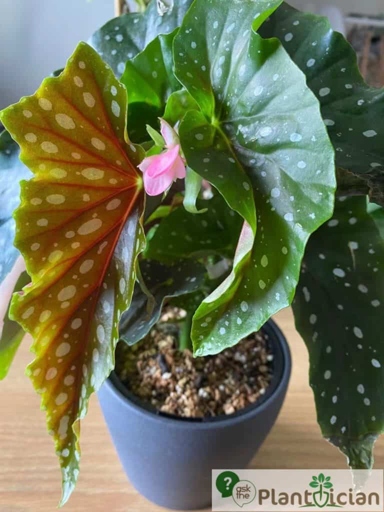
If you notice any pests on your begonia, such as aphids, mealybugs, or whiteflies, treat them immediately with an insecticide. Pests can also cause the leaves of your begonia to turn brown.
Over-Watering and Root Rot
If your begonia leaves are turning brown, it is likely due to overwatering or root rot. Both of these problems are caused by too much water, and can be easily fixed by allowing the soil to dry out between waterings.
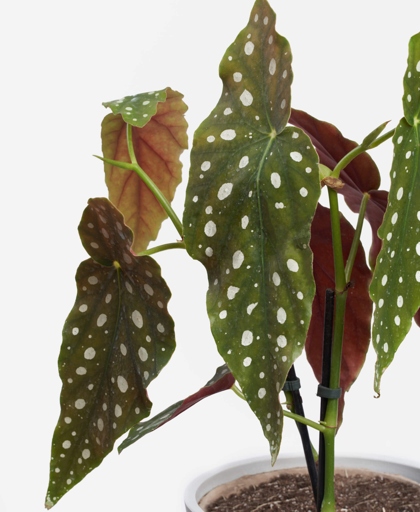
If it is constantly wet or soggy, you are probably watering too often. Allow the soil to dry out completely before watering again, and be sure to empty any water that collects in the saucer beneath the pot. If you think you may be overwatering your begonia, the first step is to check the soil.
This can happen if you water too often or if the pot does not have adequate drainage. Root rot is a more serious problem that is caused by waterlogged soil. If you think your begonia has root rot, the best course of action is to replant it in fresh, dry soil.
Control and Management
You can also mist the leaves with water every day to help keep them hydrated. If your begonia leaves are turning brown, it’s likely due to a lack of humidity. Begonias are native to tropical regions and need high humidity to thrive. Fill a tray with pebbles and water, and set your plant on top. If the air in your home is dry, the leaves will start to turn brown and crisp. The water will evaporate and increase the humidity around the plant. The best way to increase the humidity around your begonia is to use a pebble tray.
Too Much Sun
If you notice that your begonia leaves are turning brown, it’s important to take action immediately. Brown leaves are a sign that the plant is not getting enough water. When the leaves are allowed to stay too dry, they will eventually turn brown and fall off the plant.

To prevent your begonia leaves from turning brown, make sure to water the plant regularly. If you notice the leaves starting to turn brown, increase the frequency of watering. The soil should be moist, but not soggy. Allow the top inch of soil to dry out between waterings.
Use a balanced fertilizer that is high in nitrogen. Apply the fertilizer every two weeks during the growing season. In addition to watering, begonias also need to be fertilized regularly.
Control and Management
Here are some tips to help you control and manage your begonia: If your begonia leaves are turning brown, it is likely due to a lack of water or too much sun exposure.
-Water your begonia regularly, making sure to keep the soil moist but not soggy.
-If you notice the leaves starting to turn brown, increase the frequency of watering.

-Make sure your begonia is getting enough light, but not too much direct sunlight, which can scorch the leaves.
-If the leaves are still turning brown after you have adjusted the watering and light, it is likely due to a pest infestation. Inspect the leaves for signs of pests and treat accordingly.
Nutrient Deficiency
If your begonia leaves are turning brown, it could be a sign of nutrient deficiency. While begonias are not typically heavy feeders, they do need a consistent supply of nutrients to stay healthy. You can also try top dressing with compost or manure to give it a boost. If you think your begonia might be lacking in nutrients, try giving it a fertilizer designed for blooming plants.
Control and Management
If the air in your home is too dry, the leaves will begin to turn brown and crisp. Begonias are native to tropical regions and require high humidity to thrive. If you’re noticing that your begonia leaves are turning brown, it’s likely due to a lack of humidity.

First, try grouping your plant with other houseplants. You can also try setting your begonia on a pebble tray. The evaporation from the water will increase the humidity around the plant. There are a few things you can do to increase the humidity around your begonia. This will create a microclimate of increased humidity. Fill a shallow dish with pebbles and water. Set your plant on top of the pebbles, making sure the pot isn’t sitting in the water.
Invest in a humidifier for your home and keep it running near your begonia. If you live in a particularly dry climate, you may need to take more drastic measures. With increased humidity, your plant will be healthy and happy once again.
Fertilizer Burn
Fertilizer burn is one of the most common problems when it comes to growing begonias. It occurs when the roots of the plant are exposed to too much fertilizer, causing them to become damaged and eventually die. This will help the plant recover and eventually return to its normal color. Fertilizer burn can also be caused by using the wrong type of fertilizer for your begonia. Make sure to use a fertilizer that is specifically designed for begonias, and follow the directions on the package carefully. If you think your begonia has fertilizer burn, the best thing to do is to stop using fertilizer and water the plant more frequently. This can happen if you use too much fertilizer, or if you don’t water the plant enough after applying it.
Control and Management
If your begonia leaves are turning brown, it’s likely due to one of two reasons: either the plant is not getting enough water, or it’s getting too much sun.
To prevent this, water your begonia regularly, making sure the soil is moist but not soggy. If the plant is not getting enough water, the leaves will begin to turn brown and wilt.
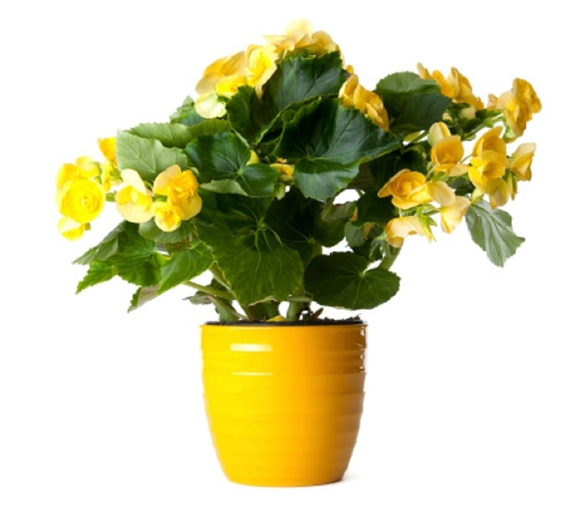
If the plant is getting too much sun, the leaves will also begin to turn brown. To prevent this, move your begonia to a spot with filtered or indirect sunlight. However, in this case, the browning will be more uniform and the leaves will eventually turn crispy and dry.
Insect Infestation Cause Browning of Leaves
Insects such as aphids, mealybugs, and scale can all cause browning of leaves. If your begonia leaves are turning brown, it could be due to an insect infestation. These insects suck the sap from the leaves, causing them to turn brown and eventually die. To get rid of these insects, you can use an insecticide or try to remove them by hand.
Control and Management
There are a few possible causes of brown leaves on begonias, including too much sun, too little water, or pests. If your begonia leaves are turning brown, it’s important to take a close look at both the plant and the environment around it.

If that doesn’t help, check for pests. To solve the problem, start by adjusting the amount of sun and water your begonia is getting. Brown leaves can also be a sign of a disease, so if you can’t find the cause, it’s best to consult a professional.
Diseases Cause Leaves Browning
One reason is due to disease. There are several reasons why begonia leaves may turn brown. Diseases that can cause leaves to brown include:
-Bacterial leaf spot
-Fungal leaf spot
-Powdery mildew
The bacteria cause the leaves to turn brown and eventually die. Bacterial leaf spot is caused by bacteria that infect the leaves of the plant.
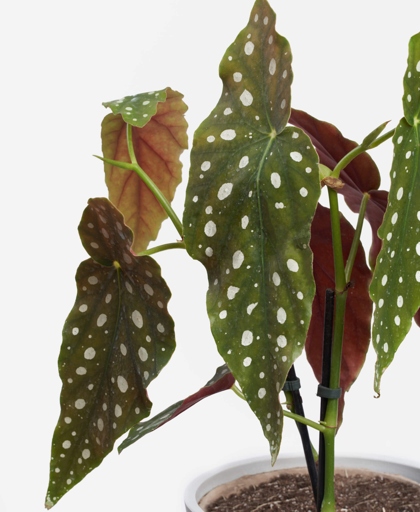
The fungi cause the leaves to turn brown and eventually die. Fungal leaf spot is caused by fungi that infect the leaves of the plant.
Powdery mildew is a fungus that affects the leaves of the plant. The fungus causes the leaves to turn brown and eventually die.
Bacterial leaf spot
Bacterial leaf spot can be difficult to control. Bacterial leaf spot is more common in warm, wet weather. Bacterial leaf spot is caused by a number of different bacteria, including Pseudomonas and Xanthomonas. The spots can be small or large, and they may coalesce to form large areas of dead tissue. The spots are usually brown or black and can be circular or irregular in shape. These bacteria are spread by water, wind, and insects. The best way to prevent the disease is to avoid overhead watering and to water only when the begonias need it. Bacterial leaf spot is a common problem for begonias. They can also be spread by contaminated tools and potting mix. The bacteria can also infect the roots. They may be surrounded by a yellow halo. The spots can appear on the leaves, stems, and flowers of begonias. Begonias that are already infected can be treated with a copper-based fungicide.
Botrytis Blight
The best way to control botrytis blight is to prevent it from happening in the first place. Destroy them so they can’t spread the fungus to other plants. It can also attack the stems and flowers, causing the plant to wilt and die. If you do see signs of botrytis blight, remove the affected leaves and stems immediately. You may also want to spray your begonias with a fungicide to help prevent the fungus from spreading. This will help to prevent the fungus from getting a foothold. The fungus attacks the leaves, causing them to turn brown and die. Water your begonias early in the day so the leaves have time to dry before nightfall. Botrytis blight is a common problem for begonias.
Pythium Stem Rot
Pythium stem rot can also be spread by water. The plant may eventually die if the disease is not treated. It can also be found on other objects that come into contact with the plant, such as tools, gloves, and potting mix. It can also cause the stem of the plant to rot. The fungus can spread from one plant to another through contact with these objects. The fungus can cause the leaves of a begonia to turn brown and die. This fungus can live in the soil and on the surface of plant leaves. Pythium stem rot is a disease that can affect begonias. The disease is caused by a fungus called Pythium.
Control and Management
If your begonia leaves are turning brown, it’s likely due to one of three reasons: too much sun, too little water, or too much fertilizer.
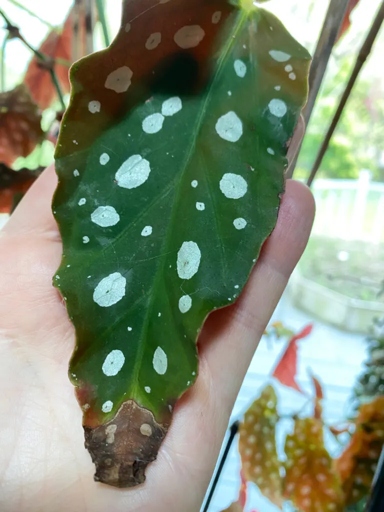
If it’s still not looking better, cut back on the fertilizer. To fix the problem, start by moving your plant to a spot that gets less sun. If that doesn’t help, try watering your plant more often.
Septoria Leaf spot
If you’re noticing brown spots on the leaves of your begonia, it’s likely due to septoria leaf spot. The spots are often surrounded by a yellow halo, and they can eventually lead to the leaves turning brown and falling off. If the problem persists, you may need to treat your plant with a fungicide. This fungal disease is characterized by small, dark brown spots that can appear on both the top and bottom of leaves. Septoria leaf spot is most common in humid or wet conditions, so be sure to water your begonia only when the soil is dry.
Rhizoctonia Crown Rot
Rhizoctonia crown rot is a fungal disease that affects begonias. The fungus attacks the plant’s crown, or center, causing the leaves to turn brown and wilt. The plant may also produce fewer flowers.
Too much water can also lead to crown rot in begonias. This disease is often caused by overwatering, which creates the perfect conditions for the fungus to thrive.
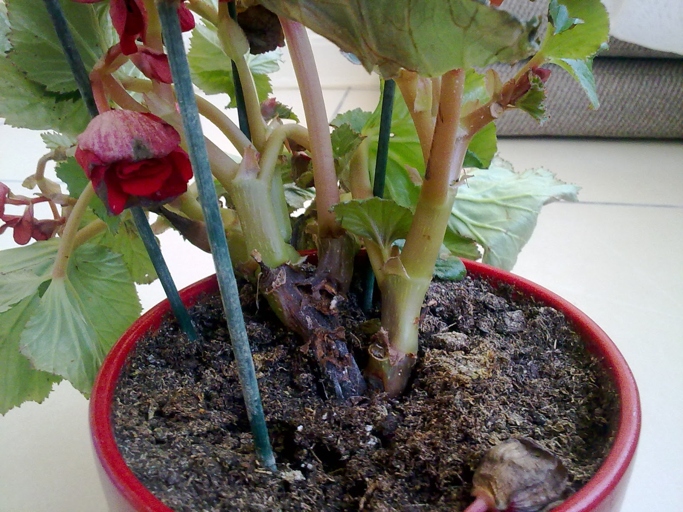
To prevent this disease, water your begonias only when the soil is dry to the touch. If you suspect your begonia has crown rot, remove any affected leaves and dispose of them. Allow the plant to drain thoroughly after watering, and do not water again until the soil is dry. You can also try treating the plant with a fungicide.
Powdery Mildew
The best way to prevent powdery mildew is to water your begonia early in the day so that the leaves have time to dry before nightfall. This fungal disease is most common in warm, humid climates and can be difficult to control. If you notice brown spots on the leaves of your begonia, it is likely due to powdery mildew. If you live in an area with high humidity, you may also need to increase the amount of ventilation in your home or greenhouse. However, it is important to remember that fungicides can be harmful to humans and the environment, so they should be used as a last resort. If powdery mildew does occur, you can try treating it with a fungicide.
Control and Management
If you’re noticing that your begonia leaves are turning brown, there are a few possible explanations. Conversely, if you’re not watering your begonia enough, the leaves will also start to brown. It’s important to find a happy medium when watering your begonia, and to make sure that the soil is evenly moist. If you’re watering your begonia too much, the leaves will start to brown and rot. First, it could be a watering issue.
Another possible explanation for browning leaves is a lack of humidity. To increase the humidity around your begonia, you can mist the leaves regularly or set the pot on a tray of pebbles and water. Begonia leaves will start to brown and curl if the air around them is too dry.
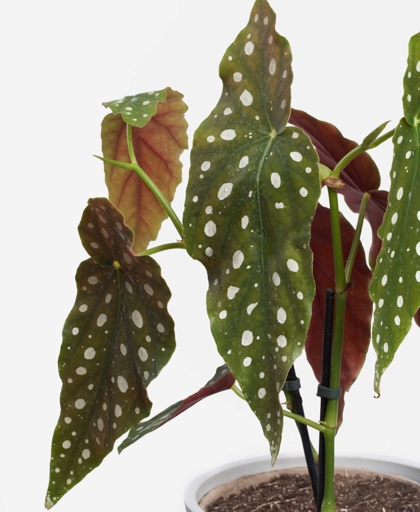
Finally, browning leaves can also be a sign of too much direct sunlight. If your begonia is getting too much sun, the leaves will start to brown and dry out. Move your begonia to a spot that gets indirect sunlight and see if that makes a difference.
Edema Causes Brown Spots on Leaves
One of the most common problems with begonias is brown leaves. There are several possible causes of brown leaves on begonias, including edema, sunburn, and pests.
Edema is often caused by overwatering or too much humidity. Edema is a condition in which the plant cells absorb too much water. This can cause the leaves to swell and eventually burst, leading to brown spots.
Sunburn can also cause brown spots on begonia leaves. If the leaves are exposed to direct sunlight for too long, they can become damaged and turn brown.
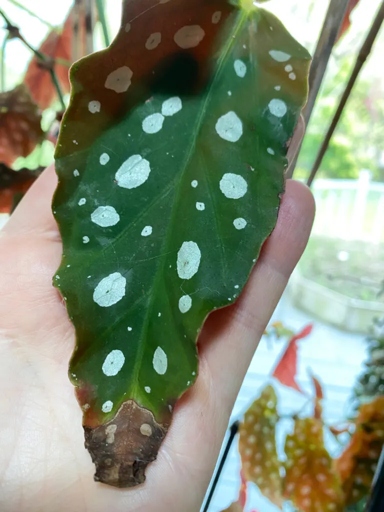
Pests can also cause brown spots on begonia leaves. These pests can cause the leaves to turn brown as they suck the nutrients out of the plant. Aphids, mealybugs, and scale insects are all common pests that can feed on begonias.
Control and Management
If your begonia leaves are turning brown, it’s likely due to one of two reasons: either the plant is getting too much sun, or the soil is too dry.
If the plant is getting too much sun, the leaves will start to turn brown and dry out. To prevent this, make sure to give the plant plenty of water and move it to a spot that gets less sun.

To prevent this, make sure to water the plant regularly and keep the soil moist. If the soil is too dry, the leaves will also start to turn brown.
Frost Damage
Sometimes the leaves will turn brown and curl up, while other times they will turn black and mushy. If you suspect your begonia has been damaged by frost, here are a few things to look for: Frost damage on begonias is not always easy to spot.
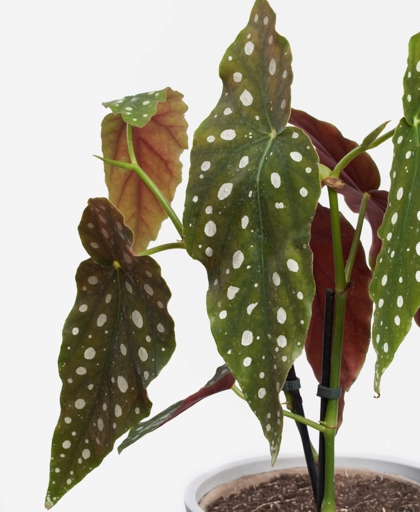
-Brown or black leaves
-Leaves that are curled up or wilted
-Mushy leaves
If the frost damage is severe, you may need to cut the plant back to encourage new growth. If you see any of these signs, it’s important to take action immediately. Remove the damaged leaves and put the plant in a warm, sunny spot.
Control and Management
If your begonia leaves are turning brown, it’s likely due to a lack of humidity. Begonia plants thrive in humid environments, so if the air in your home is dry, it can cause the leaves to turn brown and crisp. There are a few things you can do to increase the humidity around your begonia:

– Group your begonia with other plants. This will create a mini greenhouse effect and increase the humidity around the plants.
The evaporation from the water will increase the humidity around the plant. Fill a tray with pebbles and water, and place it underneath your begonia pot. – Use a pebble tray.
– Use a humidifier. This is the most direct way to increase the humidity in the air, and will benefit all of your plants, not just your begonia.
By increasing the humidity around your begonia, you can prevent the leaves from turning brown.
Low humidity Cause leaves to Turn Brown
If you notice your begonia leaves turning brown, it could be due to low humidity. While begonias prefer humid conditions, they can tolerate some dryness. However, if the air is too dry, it can cause the leaves to turn brown and crisp.
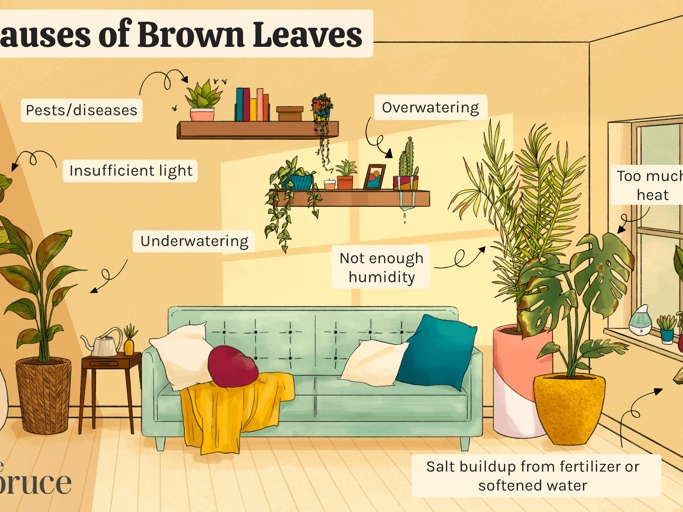
If you think low humidity is the problem, try increasing the humidity around your plant. You can do this by placing the pot on a tray of pebbles and water, or using a humidifier. If the leaves are only slightly brown, they should recover. However, if they are severely brown and crisp, they will likely need to be replaced.
Control and Management
If your begonia leaves are turning brown, it’s likely due to one of three reasons: too much sun, too little water, or pests.

If you notice this happening, move your plant to a shadier spot. Too much sun can cause begonia leaves to turn brown and dry out.
Make sure to water your plant regularly, especially during hot summer months. Too little water can also cause begonia leaves to turn brown and wilt.
Pests can also cause begonia leaves to turn brown. If you see any pests on your plant, remove them immediately and treat the plant with an insecticide.
How to Prevent Brown Leaves on Begonia
If you’re noticing brown leaves on your begonia, it’s likely due to one of these three reasons: too much sun, not enough water, or pests.
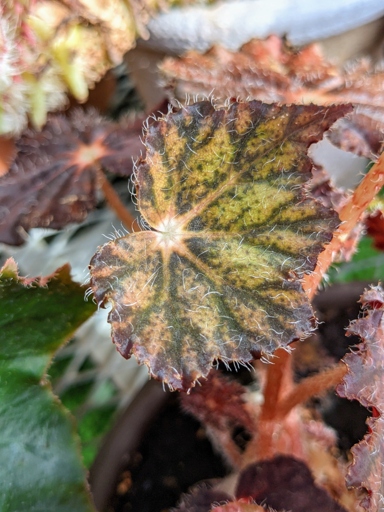
Brown leaves can also be a sign of an infestation. To prevent brown leaves, start by giving your begonia the right amount of sun. Allow the top inch of soil to dry out between waterings. If you see any pests on your plant, remove them immediately. And finally, check for pests. They thrive in bright, indirect sunlight, so if you’re keeping yours in a spot that’s too shady, it may not be getting enough light. You can also prevent brown leaves by making sure to water your begonia regularly.
Frequently Asked Questions
1. Why are my begonia leaves turning brown?
There are several possible reasons for this. It could be due to too much sun, not enough water, or a nutrient deficiency.
2. What can I do to prevent my begonia leaves from turning brown?
Make sure to water your begonia regularly, and give it plenty of indirect sunlight. If you think it might be a nutrient deficiency, you can try fertilizing it.
3. Why do begonias need indirect sunlight?
Too much direct sunlight can scorch the leaves of a begonia and cause them to turn brown.
4. How often should I water my begonia?
Water your begonia when the top inch of soil is dry.
5. What type of fertilizer is best for begonias?
A balanced fertilizer is best for begonias. You can also use a fertilizer specifically designed for begonias.
6. I think my begonia has a nutrient deficiency. What should I do?
If you think your begonia has a nutrient deficiency, you can try fertilizing it. A balanced fertilizer is best, or you can use a fertilizer specifically designed for begonias.
7. My begonia leaves are turning brown and falling off. What could be causing this?
This could be due to too much sun, not enough water, or a nutrient deficiency.
8. Can I save my begonia if the leaves are already turning brown?
If the leaves are already turning brown, it might be too late to save your begonia. However, you can try watering it regularly and giving it plenty of indirect sunlight. If you think it might be a nutrient deficiency, you can try fertilizing it.
9. What should I do if my begonia is already dead?
If your begonia is already dead, you can try to propagate it from a leaf or stem cutting.
10. How can I propagate my begonia from a leaf or stem cutting?
To propagate your begonia from a leaf or stem cutting, you will need to take a cutting from a healthy plant and root it in water or moist soil.
Final thoughts
If the leaves on your begonia are turning brown, it is likely due to one of three reasons: too much sun, not enough water, or pests. To solve the problem, simply adjust the care you are giving your plant. If it is getting too much sun, move it to a shadier spot. If it is not getting enough water, water it more frequently. If pests are the problem, treat the plant with an insecticide. With a little care, your begonia will be back to its healthy self in no time.
